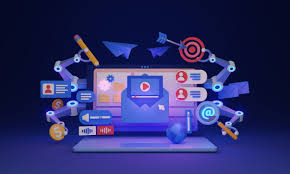
In today’s rapidly evolving digital landscape, AI-powered microservices have emerged as a lucrative frontier for entrepreneurs and developers. These lightweight, modular tools offer targeted automation for specific tasks—everything from data analysis and image recognition to personalized email responses. The beauty of this approach lies in combining AI with microservices architecture to create scalable, efficient, and monetizable digital products.
What Are AI-Powered Microservices?
At their core, microservices are small, independent software modules that perform a specific function and communicate via APIs. When integrated with artificial intelligence—such as machine learning, natural language processing (NLP), or computer vision—they become powerful tools capable of intelligent decision-making and task automation.
Examples include:
- An AI chatbot microservice for customer support.
- An invoice reader using OCR and AI classification.
- A recommendation engine for e-commerce platforms.
Each of these services can be built, deployed, and monetized independently.
Why Are They a Great Monetization Opportunity in 2025?
- Low Overhead, High ROI
Developers can launch AI microservices on platforms like AWS Lambda, Google Cloud Functions, or via Docker containers—minimizing infrastructure costs while serving clients globally. - Demand for Niche Automation
Small businesses and startups often can’t afford full-scale software suites. Microservices fill that gap with affordable, plug-and-play AI tools that solve very specific problems. - API-as-a-Product Model
You can monetize AI microservices by offering them as paid APIs. Sites like RapidAPI, AWS Marketplace, and even your own subscription-based portal make it easy to earn income from API usage. - Scalability & Customization
Because microservices are modular, you can easily tailor or bundle them for different industries (healthcare, finance, retail), expanding your reach and revenue potential.
How to Monetize AI Microservices
Here are several tested strategies to turn your microservices into profit-generating assets:
1. Pay-Per-Use API Access
Charge users based on how often they use your service (e.g., $0.001 per API call). This model works well for data-heavy services like language translation or fraud detection.
2. Subscription Plans
Offer tiered pricing based on usage limits or advanced features. For instance:
- Free: 100 API calls/month
- Basic: $9/month for 5,000 calls
- Pro: $49/month with premium support
3. White Label Solutions
Sell your microservices to businesses under their branding. This is great for agencies or SaaS companies looking to integrate smart automation without developing from scratch.
4. Marketplace Distribution
List your services on platforms like:
- RapidAPI
- Zapier App Directory
- GitHub Sponsors (for open-source monetization)
- Cloud marketplaces (AWS, Azure, Google Cloud)
5. Bundling Services
Create value-added bundles, like combining sentiment analysis, auto-responder generation, and CRM integration into one “Smart Inbox Assistant” package.
Popular Use Cases in 2025
- Smart Resume Analyzers for HR teams.
- Voice Command Handlers for IoT applications.
- Personal Finance Bots that categorize spending using AI.
- Localized Chat Translation Engines for global customer service.
These are just a few examples. The possibilities are endless as AI models get smaller, cheaper, and more accurate.
Challenges to Watch For
Despite the advantages, there are some hurdles:
- Data Privacy & Compliance: Make sure your AI respects GDPR, HIPAA, and other data regulations.
- Model Maintenance: AI models degrade over time and require updates.
- Security Concerns: Isolate and secure endpoints to prevent abuse.
Conclusion
AI-powered microservices represent a perfect blend of agility, intelligence, and profitability. As businesses increasingly look to automate operations, developers who build and monetize smart microtools stand to gain substantial rewards. With the right combination of innovation, technical skills, and strategic marketing, you can turn even the smallest automation into a sustainable income stream in 2025 and beyond.



